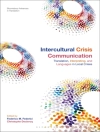Everyday social life is deeply tied to the ways in which people talk, interact, and engage in joint activities with each other. This book examines language use and social interaction through the lens of complexity, focusing on how participants establish and maintain shared understanding in multi-layered situations and settings. This book will find readership among students and scholars who use video-based methods and are interested in interaction, intersubjectivity and multimodality.
Tabela de Conteúdo
Chapter 1. On the complexities of interaction: An introduction (Tiina Eilittä, Pentti Haddington, Antti Kamunen, Laura Kohonen-Aho, Iira Rautiainen and Anna Vatanen).- Part I: Complexity that resides in multiactivity multisensoriality.- Chapter 2. Tasting vs. eating: The methodic and situated differentiation of embodied multisensorial activities in social interaction (Lorenza Mondada).- Chapter 3. Metagaming and multiactivity: How board gamer players deal with progressivity (Emily Hofstetter and Jessica Robles).- Chapter 4. Embodied noticings as repair initiations: On multiactivity in choir rehearsals (Anna Vatanen).- Part II: Complexity that resides in asymmetries related to affordances, resources and roles.- Chapter 5. Intersubjective interaction during the word explanation activity in social virtual reality (Heidi Spets).- Chapter 6. Building on linguistically exclusive talk: Access, participation and progressivity in a multinational military staff (Antti Kamunen and Pentti Haddington).- Chapter 7. Nudging questions as devices for prompting courses of action and negotiating deontic (a)symmetry in UN Military Observer training (Iira Rautiainen, Pentti Haddington and Antti Kamunen).- Part III: Complexity that resides in the coordination of participation frameworks.- Chapter 8. Playing together on a large screen: Spatiality, materiality, temporality and the complexity of interaction (Heike Baldauf-Quilliatre and Biagio Ursi).- Chapter 9. Getting (others) involved with smartphones: Participation in showing sequences in multi-party settings (Iuliia Avgustis and Florence Oloff).- Chapter 10. The primacy of affective engagement in simultaneously unfolding participation frameworks (Julia Katila, Yumei Gan, Sara Goico and Marjorie Goodwin).- Part IV: Complexity that resides in the characteristics of interactional settings and environments.- Chapter 11. Ambulatory openings (Elliot M. Hoey).- Chapter 12. Openings of interactions in immersive virtual reality: Identifyingand recognising prospective co-participants (Pentti Haddington, Laura Kohonen-Aho, Sylvaine Tuncer and Heidi Spets).- Chapter 13. Transitions between interactional spaces: Working towards shared understanding in a hybrid workshop setting (Laura Kohonen-Aho).
Sobre o autor
Pentti Haddington is Professor of English language and interaction at the University of Oulu, Finland.
Tiina Eilittä is a doctoral researcher at the University of Oulu, Finland.
Antti Kamunen is a postdoctoral researcher at the University of Oulu, Finland.
Laura Kohonen-Aho is a postdoctoral researcher at the University of Oulu, Finland.
Iira Rautiainen is a postdoctoral researcher at the University of Oulu, Finland.
Anna Vatanen is a researcher at the University of Helsinki, Finland, and also affiliated with the University of Oulu, Finland.
The editors form a team that has worked together on complexity of interaction for several years in the projects i Task: Linguistic and embodied features of interactional multitasking and Peace Talk: Talk and interaction in multinational crisis management training funded by the Academy of Finland and Eudaimonia Institute at the University of Oulu, Finland.












